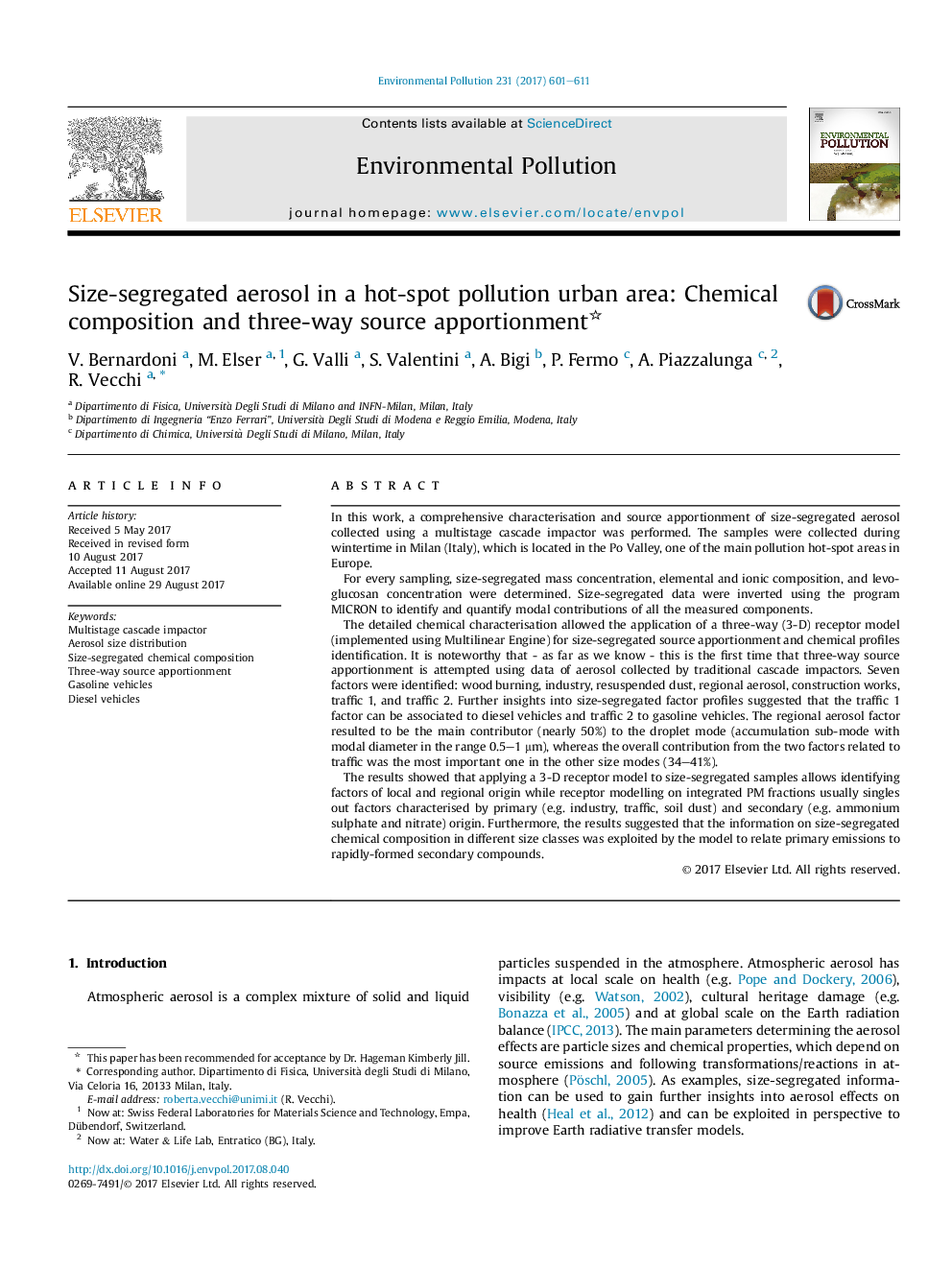| کد مقاله | کد نشریه | سال انتشار | مقاله انگلیسی | نسخه تمام متن |
|---|---|---|---|---|
| 5748598 | 1619142 | 2017 | 11 صفحه PDF | دانلود رایگان |

- Size-segregated samples were collected by a multistage cascade impactor.
- Mass, elements, inorganic ions and levoglucosan modal contributions were determined.
- 3-D source apportionment gave size-segregated source profiles and contributions.
- Factors related to diesel and gasoline vehicles were identified.
- Advantages compared to traditional source apportionment were discussed.
In this work, a comprehensive characterisation and source apportionment of size-segregated aerosol collected using a multistage cascade impactor was performed. The samples were collected during wintertime in Milan (Italy), which is located in the Po Valley, one of the main pollution hot-spot areas in Europe.For every sampling, size-segregated mass concentration, elemental and ionic composition, and levoglucosan concentration were determined. Size-segregated data were inverted using the program MICRON to identify and quantify modal contributions of all the measured components.The detailed chemical characterisation allowed the application of a three-way (3-D) receptor model (implemented using Multilinear Engine) for size-segregated source apportionment and chemical profiles identification. It is noteworthy that - as far as we know - this is the first time that three-way source apportionment is attempted using data of aerosol collected by traditional cascade impactors. Seven factors were identified: wood burning, industry, resuspended dust, regional aerosol, construction works, traffic 1, and traffic 2. Further insights into size-segregated factor profiles suggested that the traffic 1 factor can be associated to diesel vehicles and traffic 2 to gasoline vehicles. The regional aerosol factor resulted to be the main contributor (nearly 50%) to the droplet mode (accumulation sub-mode with modal diameter in the range 0.5-1 μm), whereas the overall contribution from the two factors related to traffic was the most important one in the other size modes (34-41%).The results showed that applying a 3-D receptor model to size-segregated samples allows identifying factors of local and regional origin while receptor modelling on integrated PM fractions usually singles out factors characterised by primary (e.g. industry, traffic, soil dust) and secondary (e.g. ammonium sulphate and nitrate) origin. Furthermore, the results suggested that the information on size-segregated chemical composition in different size classes was exploited by the model to relate primary emissions to rapidly-formed secondary compounds.
190
Journal: Environmental Pollution - Volume 231, Part 1, December 2017, Pages 601-611